- Book Title: The Solar Way: A Guide to Hermeticism Using the Tarot Major Arcana
- Author: Nina Rudnikova
- Translated by: Yury Pankratov
- Publisher: Aeon Books, March, 2025 Product Page
- RRP: GBP £45.00; (Hardback) US $60.00
- ISBN: 9-781-801521680
- Reviewed by: Helen Diamond
Nina Rudnikova lived from 1890 to 1940, and studied directly under Gregory von Mёbes (also known as G.O. Mebes, or GOM). Mёbes was a leader in Russian Freemasonry and the Rosicrucian Order. He was a prominent figure in early 20th century western occultism; he gave popular lectures and published A Concise Encyclopedia of Occultism. He was also an active member of a Martinist Lodge started in Russia by Gérard Encausse (Papus).
Rudnikova’s The Solar Way is part of the posthumous spread of ideas encouraged by Mёbes. These can also be found in Meditations on the Tarot by Valentin Tomberg. Mouni Sadhu, while not a disciple of Mёbes, was highly influenced by his work and that of Meditations when writing The Tarot: the Quintessence of Hermetic Occultism. Indeed, readers can find a similar structure across these three books. All three focus solely on the 22 Major Arcana, begin first with the Magician (The Fool features between Judgement and The World) and are distinctly spiritual, philosophical and reflective works that guide readers into deep concepts of Christian Hermeticism, using the 22 Arcana.
The book begins with a biography of the author, her scholarly achievements and time studying under Mёbes. Anticipating unrest upon the Bolsheviks’ ascent to power, she fled to Estonia, settling in Tallinn, where she worked as a respected healer. She shared some written materials, asking they be passed on to “a worthy individual”, which ended up in Brazil. Some of her unpublished works are sadly lost; no doubt she would have been a more familiar name in western esoteric studies otherwise.
The introduction takes us through the “cosmic meaning of the Ten Commandments”. This is not the ten commandments of prohibition, but discusses the first inscription that Moses was said to have destroyed upon his initial descent from Mount Sinai, in righteous anger. It can be a little bit jarring when the reader first encounters this chapter, if one has had difficult experiences with Judaeo-Christian orthodoxy. I would recommend trying to keep an open mind, as the author is guiding us through universal principles here, rather than advocating for any kind of dogma.
In fact, there are many references to Eastern and Western religions, religious concepts and spiritual leaders. This is something most books on the tarot tend to shy away from, aside from Buddhism and Kabbalah. The Solar Way draws clear parallels between the perennial philosophies that underscore all religions.
Each chapter is then dedicated to a card in the Tarot Majors; these are termed the Twenty-Two Principles and described as a framework for “truth seekers” to acquire and apply “Knowledge” to the human condition while preserving our connection to Spirit. As you may expect for someone that lived in continental Europe before WWII, the deck featured is the Marseille.
This is tarot off the beaten path; for example, the book on Arcanum 5 spends several pages on the concept of Will before addressing spirituality. Arcanum 7 takes us through seven forms of consciousness via the planets and Arcanum 3 is titled ‘The World Mind’. It is very interesting to learn different philosophies of the tarot, but again an open mind is needed.
At the back of the book is a collection of titles and phrases associated with each card. Some of these are familiar (Arcanum 12 states “Sacrifice” as a key word) and some not so familiar, but elegant nonetheless (Arcanum 18’s is “Reflected Light”). A table is then provided, detailing each card’s expression in the four planes of manifestation: spiritual, mental, astral and etheric. At the end is a helpful Index.
The Solar Way is not a book for beginners. Although this is clearly an excellent translation, the writing style takes some getting used to. The book does not descend into unnecessarily flowery language as seen in texts from other authors around the turn of the century; however, I did find myself having to read some paragraphs two or three times, to get the gist. This book can require serious study, although with the index it can serve as an excellent reference book. If you own either, or both, The Tarot by Mouni Sadhu and Meditations on the Tarot then this book will complement your collection. The Solar Way is a must-have if you wish to study the deeper levels of tarot’s universal principals.

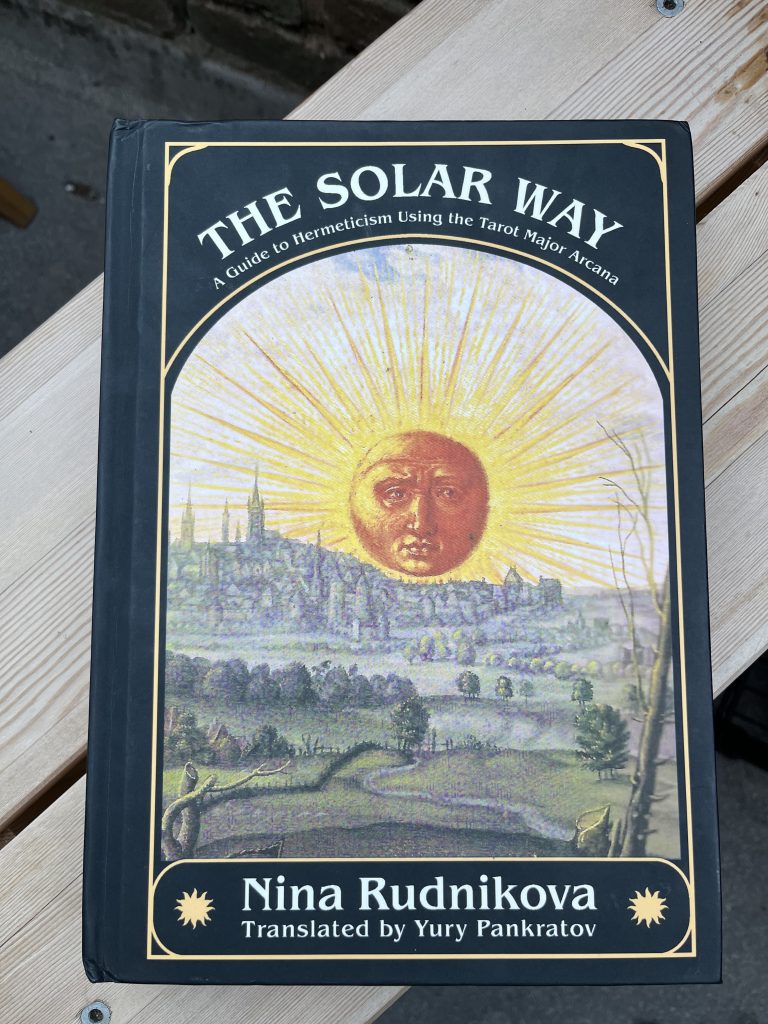
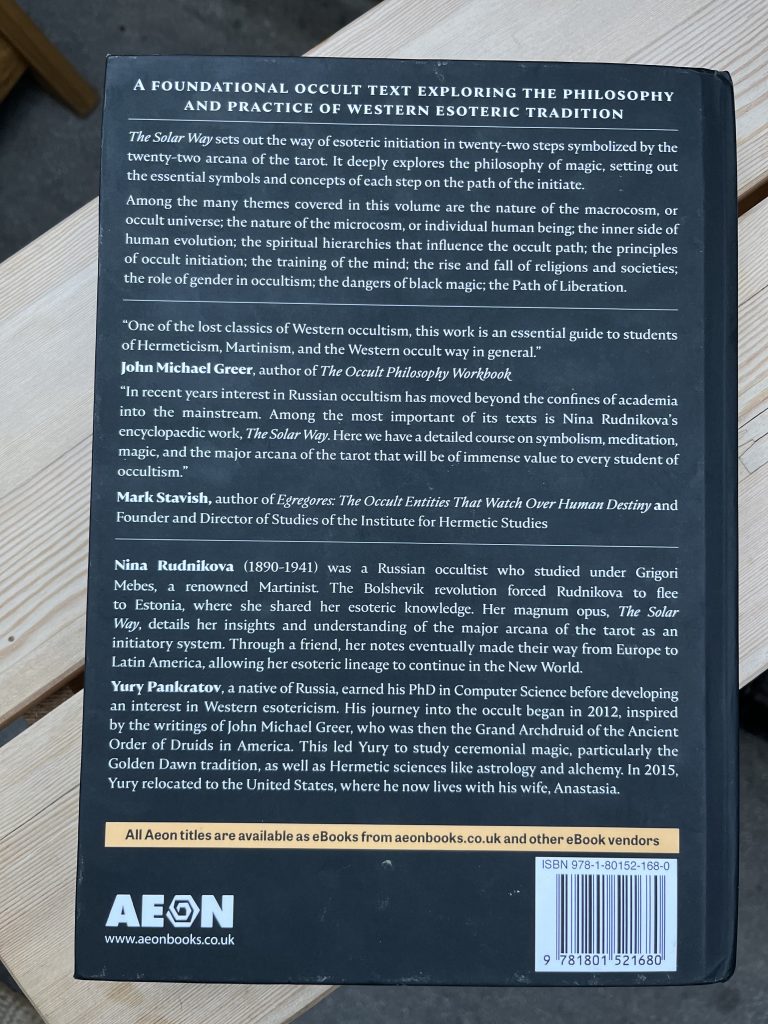
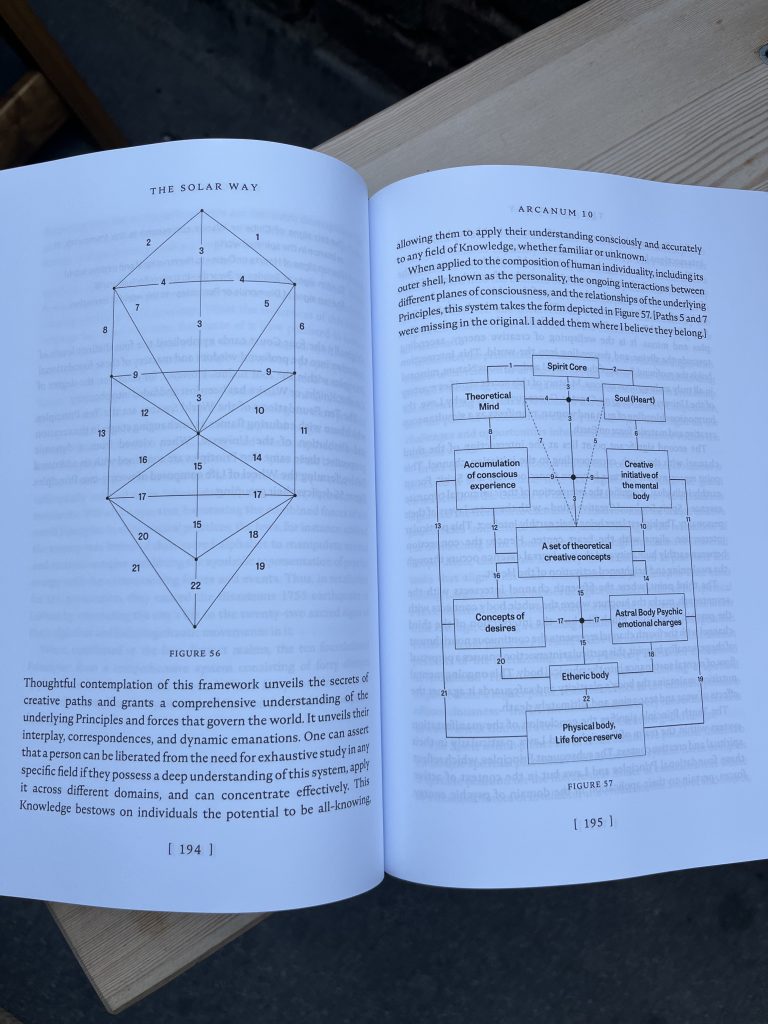
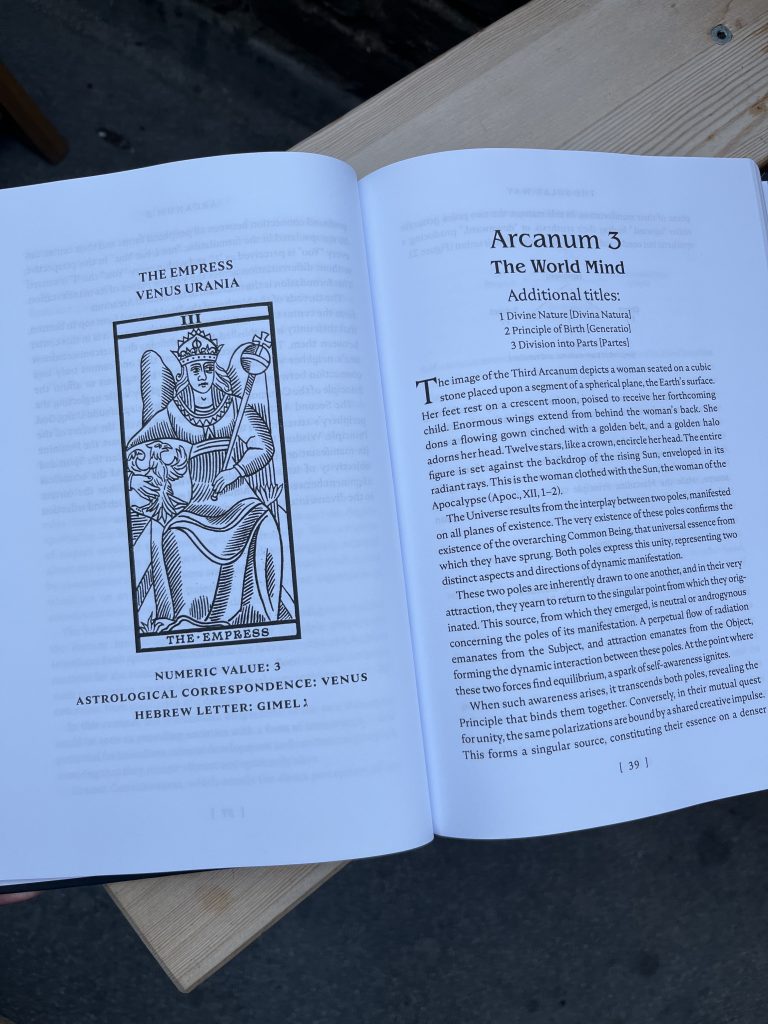
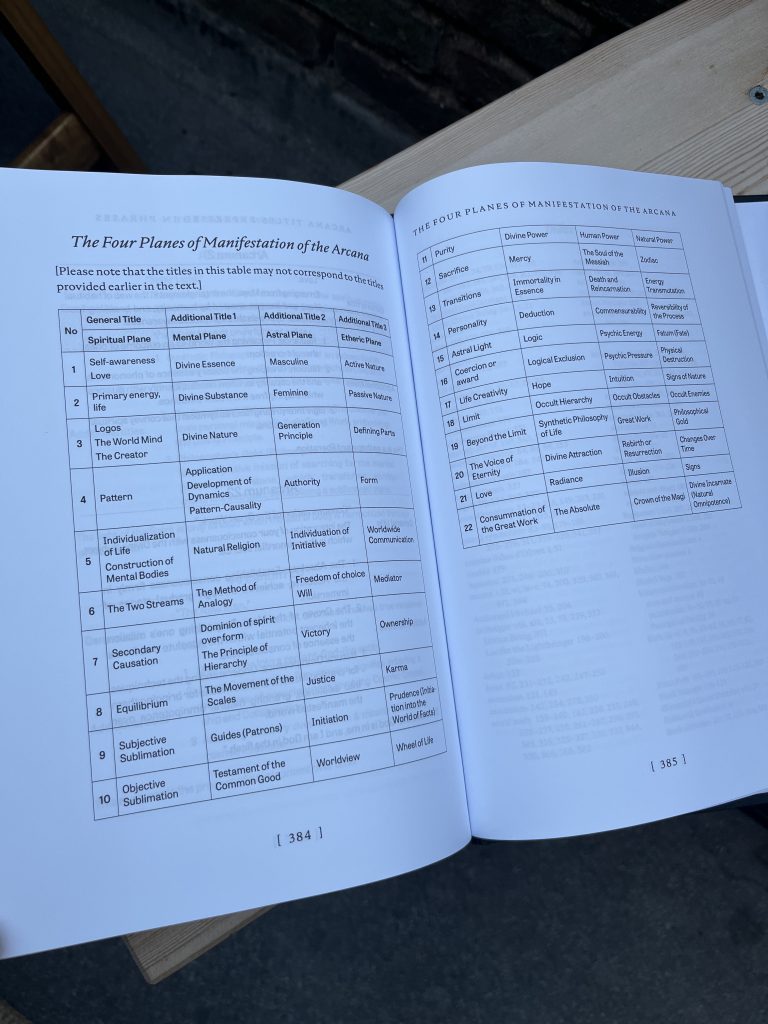
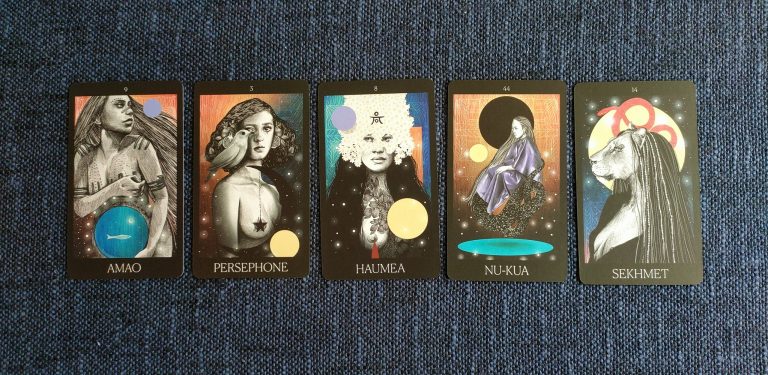
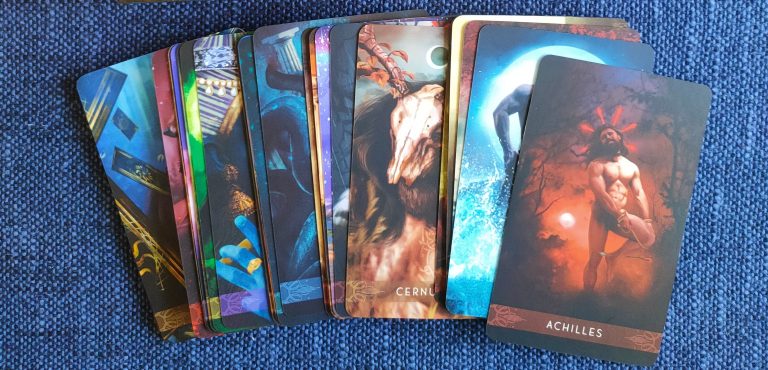


0 Comments